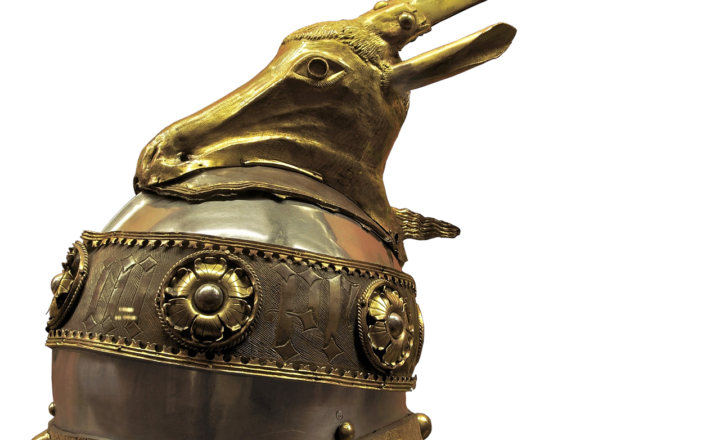
History is filled with stories of great empires and civilizations that once ruled vast lands, only to be lost to the sands of time. While many are familiar with the Roman Empire, Ancient Egypt, or the Inca civilization, countless other empires have faded into obscurity, their achievements and influence largely forgotten by history. In this article, we will explore some of the most fascinating, yet lesser-known, lost civilizations that have shaped the course of human history.
1. The Kingdom of Aksum
Located in what is today northern Ethiopia and Eritrea, the Kingdom of Aksum was a major trading empire between the 4th century BC and the 7th century AD. Aksum was known for its monumental obelisks, one of which still stands today in Aksum city. The kingdom was a major player in the trade networks between Rome, India, and the Arabian Peninsula, controlling key ports along the Red Sea.
Aksum was also one of the first empires to embrace Christianity, adopting it as the state religion in the 4th century AD, making it one of the earliest Christian nations in the world. Despite its impressive achievements in architecture, trade, and religion, Aksum eventually declined due to changes in trade routes and environmental factors, fading from global prominence.
2. The Hittite Empire
The Hittites were an ancient Anatolian people who established a powerful empire in what is now Turkey, from the 18th century BC to around 1180 BC. At its height, the Hittite Empire rivaled the Egyptians and the Assyrians in military strength and influence. The Hittites are credited with being one of the first civilizations to use iron extensively, helping to usher in the Iron Age.
The Hittites were also known for their legal code, which was relatively progressive for its time, with laws that addressed issues such as property rights and compensation for injuries. However, despite their military prowess and innovations, the Hittite Empire mysteriously collapsed around 1200 BC during the Bronze Age collapse, leaving little behind other than ruins and ancient texts.
3. The Kingdom of Kush
The Kingdom of Kush thrived along the Nile River, south of Egypt, in what is now Sudan. The Kushites ruled from around 1070 BC until their eventual decline in the 4th century AD. For a time, they even ruled over Egypt as the 25th Dynasty, establishing their capital at Napata and later at Meroë, a city known for its pyramids and ironworking.
The Kushites were exceptional builders and traders, known for their vibrant culture, advanced ironworking technology, and stunning architectural achievements. While they are often overshadowed by their Egyptian neighbors, the Kingdom of Kush played a significant role in the development of northeastern Africa. Over time, however, changes in trade routes and environmental degradation led to their decline.
4. The Indus Valley Civilization
One of the earliest urban cultures in the world, the Indus Valley Civilization (also known as the Harappan Civilization) flourished from 3300 BC to 1300 BC in what is now Pakistan and northwest India. Known for its advanced urban planning, the Indus Valley cities of Harappa and Mohenjo-Daro were well-organized, featuring impressive drainage systems, streets laid out in a grid pattern, and sophisticated architecture.
Despite their technological achievements, little is known about the language, culture, or politics of the Indus Valley people, as their script remains undeciphered. The reasons for the decline of this civilization are still debated, but theories range from environmental changes, such as flooding or drought, to the invasion of nomadic peoples.
5. The Minoan Civilization
The Minoans were one of the earliest advanced civilizations in Europe, thriving on the island of Crete from around 2600 BC to 1100 BC. Known for their impressive palaces, the largest of which is Knossos, the Minoans were a seafaring people who engaged in extensive trade throughout the Mediterranean. Their art, architecture, and advanced plumbing systems are considered some of the finest achievements of the ancient world.
The Minoans are perhaps best known for their association with the myth of the Minotaur, a creature said to dwell in the labyrinth beneath King Minos’ palace. Despite their cultural and technological achievements, the Minoan civilization suddenly collapsed, possibly due to a combination of natural disasters such as earthquakes and volcanic eruptions, as well as invasions by the Mycenaeans.
6. The Zapotec Civilization
The Zapotec civilization flourished in the Valley of Oaxaca in present-day Mexico from around 500 BC to AD 900. They are best known for the city of Monte Albán, one of the earliest and most important Mesoamerican cities. Monte Albán was the political and economic center of the Zapotec state, featuring grand plazas, pyramids, and a system of writing that predates the Maya.
The Zapotecs made significant contributions to Mesoamerican culture, including advancements in writing, astronomy, and agriculture. However, like many ancient civilizations, the Zapotecs gradually declined due to a combination of internal strife, environmental changes, and external pressures from neighboring civilizations.
7. The Kingdom of Champa
The Kingdom of Champa was a collection of city-states that flourished in what is now central and southern Vietnam from the 2nd century AD until the 15th century. The Cham people, who were of Austronesian descent, were known for their seafaring skills and their trade networks, which connected them to China, India, and the Malay Archipelago.
The Champa Kingdom is particularly famous for its Hindu temples, including the UNESCO World Heritage site of Mỹ Sơn, which features intricate carvings and unique architectural styles. Despite their cultural achievements, the kingdom faced constant threats from neighboring states, including the Khmer Empire and the Đại Việt. By the 15th century, the Kingdom of Champa had been absorbed by Đại Việt, and the Cham people were assimilated into Vietnamese culture.
Conclusion
The history of humanity is filled with empires that rose to greatness and then faded away, often leaving behind only traces of their existence. While many of these civilizations may not be as well-known as others, their contributions to human culture, trade, technology, and governance are undeniable. These forgotten empires remind us of the ever-changing nature of human history and the importance of preserving the stories of those who came before us.






